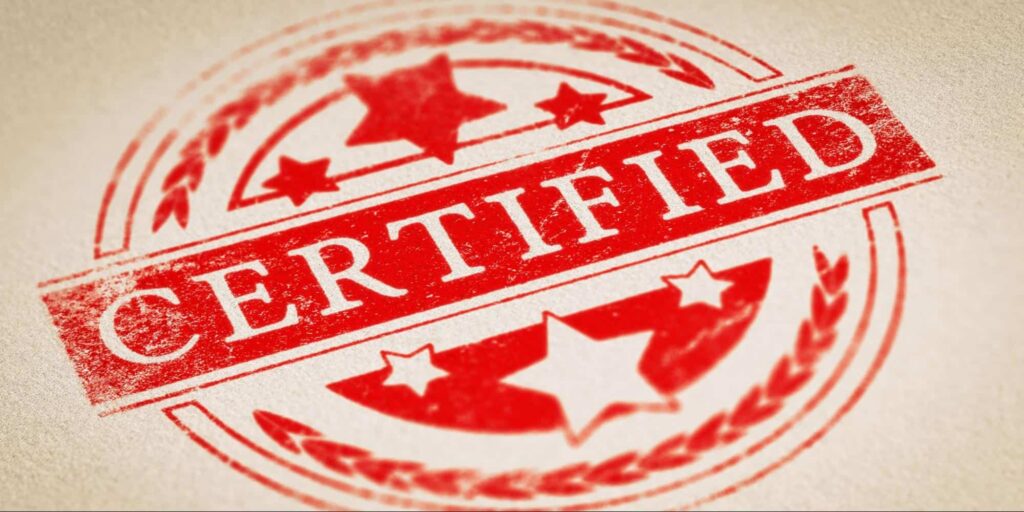How to Apply for a State Teaching Certification in New Zealand
Are you interested in pursuing a teaching profession in New Zealand? This guide outlines the steps required to obtain your teaching certification.
From completing a recognised teacher education program to registration assessment and verification, let’s go over everything you need to get a teaching certificate in NZ!
How to Apply for a State Teaching Certification in New Zealand?

To apply for a state teaching certification in New Zealand, you need to register with the Teaching Council of Aotearoa New Zealand (TCANZ).
Once you have been registered with the Teaching Council of Aotearoa New Zealand (TCANZ) and hold a current practising certificate, you’re eligible to teach in any school in New Zealand.
The process is divided into various stages, each of which is aimed to guarantee that teachers satisfy the highest standards and have the skills needed to give high-quality education.
But don’t worry! We’ll walk you through every step.
| Difficulty | Moderate ●●●○○ |
| Number of steps | 3 |
| Time to perform fix | 5 working days or longer (depending on the complexity) |
| Things you need | Two forms of identification (Passport, driver’s license, etc.) Certified copies of your qualifications Details of your teaching experience Police clearances Declarations of any convictions Debit or credit card for payment |
STEP 1: Meet the set of requirements.

As soon as you’ve graduated (or are eligible to graduate) from your Initial Teacher Education (ITE) programme, you can already apply for registration and practising certificate.
Before you can apply for teaching certification and become a certified and registered teacher in New Zealand, you must meet a set of requirements. We’ll go over them below.
List of Requirements
Here’s the list of requirements that you need before applying for a Teaching Certification:
1. Proof of Identity form:
If you are applying for the first time, you will need to fill out:
- Proof of Identity (POI) form for New Zealand residents or the
- Proof of Identity Overseas (POI-OS) form for those applying from overseas.
These forms are available online on the Teaching Council’s website.
2. Valid documents for verifying identity:
You should provide two original identification documents to your Identity Referee. One document must be from Category A, and the other from Category B, as listed below.
Both documents need to be certified by an official and should display your full name, date of birth, and a photo for identification purposes.
Here’s the list of valid documents if you’re living in New Zealand:
Category A – Primary identification document
- New Zealand Passport
- New Zealand Certificate of Identity issued under the Passports Act 1992 to Non-New Zealand citizens who cannot obtain a passport from their country of origin.
- New Zealand Certificate of Identity (issued to people who have refugee status)
- New Zealand Refugee Travel Document
- Emergency Travel Document
- New Zealand Firearm Licence
- Overseas Passport (with or without New Zealand Immigration visa/permit)
- New Zealand Full Birth Certificate issued on or after 1998
- New Zealand Citizenship Certificate
Category B – Secondary identification document
- New Zealand Driver Licence
- Kiwi Access Card (previously known as 18+ Card)
- Community Services Card
- Super Gold Card
- Veteran Super Gold Card
- Inland Revenue Number
- Electoral Roll Records
- New Zealand utility bill, issued not more than six months earlier
Here’s the list of valid documents if you’re living overseas
Category A – Primary identification document
- Overseas Passport
- New Zealand Passport
Category B – Secondary identification document
- Overseas driver’s license
- NZ driver’s license
- National Police certificate issued within the last 6 months
3. Two identity referees:
You’ll need to provide the contact information of two referees who can attest to your identity.
If you’re living in New Zealand your identity referee could be:
- Any school principal
- Any ECE centre manager
- Any ITE head of programme
- Any endorser – a professional leader (or a senior staff member/s holding a full practising certificate and authorised by a professional leader) who endorses teacher practising certificates.
Your identity referee does not have to be your employer.
If you’re living overseas your identity referee could be a:
- Judge
- Justice of Peace
- Commission of Oath Commonwealth Representative (Ambassador/High Commissioner)
- Person authorised by law of that country to administer an oath for the purpose of judicial proceedings
4. Initial Teacher Education Qualification (ITE):
This is the process of becoming qualified to teach in a school. It is a two-year full-time programme that combines theoretical study with practical experience in schools.
In registering and applying for a practising certificate, you must provide a certified copy of your qualification.
There are two types of ITE qualifications.
For NZ-trained, you need:
- Certified copy of your approved New Zealand ITE qualification, or
- A link you provide for the Council to access your ITE qualification details on eQuals, or
- Formal written confirmation from your New Zealand ITE provider, that you have successfully completed your ITE programme.
For Overseas-trained, you need:
- Certified copy of your overseas teaching qualification or qualifications that appear on the pre-approved list of qualifications, and any underpinning qualifications, or
- A certified copy of your New Zealand Qualifications Authority (NZQA) International Qualifications Assessment (IQA) that shows your qualification is comparable to a New Zealand ITE qualification, as well as certified copies of your overseas teaching qualification or qualifications, and any underpinning qualifications.
5. Declaration of Commitment to the code | Ngā Tikanga Matatika:
You’ll need to declare your commitment to the values and expectations in the Code | Ngā Tikanga Matatika.
Your declaration should state that you’re committed to the values and expectations in the Code, and that you’re not under investigation for any matters that might impact your teaching or ability to meet the requirements of the Code.
After doing so, you should sign and date your declaration.
By making a declaration, you’re demonstrating your commitment to the values and expectations of the teaching profession in New Zealand.
6. Police vet:
Police vet is a background check that will provide information on the applicant’s criminal history, as well as any other relevant information that the Police hold, such as active charges or warrants.
Just like the requirements above, there are also two types of police vets, you should submit whatever is applicable to your situation/location.
For New Zealand Police vet:
- Your consent for the Council to apply to New Zealand Police for your police vet, and
- Confirmation of the types of verified identity documents that you provided to your identity referee.
For Overseas Police vet:
- Police vets that you have obtained from the national police service of the issuing country, for any country you have lived in for 12 months or more in the 10 years before you made your application to the Council, or
- A statutory declaration if you’re unable to obtain a police vet.
7. Physically and mentally fit:
You’ll need to provide a declaration that you’re physically and mentally fit for teaching. You may be required to provide medical evidence if needed to support your ability to teach.
8. Language Competency and/or te reo Māori:
Teaching requires a high level of English or Te Reo Mori language proficiency in speaking, writing, reading, and listening. Language proficiency requirements must be met by all applicants studying to be teachers or applying for registration and certification.
The Council prioritizes evidence-based proof, and there are several opportunities to demonstrate expertise. You can check the council’s website for the list of evidence.
9. Commitment to Māori Language and Protocols:
You need to provide a declaration that you’re committed to developing and practise te reo me ngā tikanga Māori throughout your teaching career.
Once you’ve completed the requirements listed above, you’re now ready to proceed with creating your Education Sector Logon Account (ESL) and online application to obtain a practising certificate.
STEP 2: Create your Education Sector Logon Account

Before you start with your online application for a practising certificate on the teaching council’s website you should first create an Education Sector Logon (ESL) account.
To create an ESL account, you can do the following steps:
- Find the “Entering Teaching in New Zealand” button: On the front page of Hapuri Matatu, click the box titled “Entering Teaching in New Zealand”. This would take you to the Ministry of Education’s login page, where you can also create an ESL account.
- Create an account: Once you’re on the Ministry of Education’s login page, click on the “Create new account” button.
- Pop-up window: You’ll see a pop-up reminding you to confirm whether or not you already have an ESL account. Click “Create new account”.
- Fill out the form: Once you click the create new account button, you’ll be taken to a form where you can choose your ESL username and password. Fill this out, including the captcha section at the bottom.
- Accept the Terms of Use: Make sure you read the Terms of Use carefully. Once you read and understand the Terms of Use, click “I accept”.
- Enter your personal details: To complete your ESL application, enter your email address, your surname as it appears on your evidence of identity document and your date of birth, then click “Submit”.
- Logout: After submitting you already have an ESL account. You can now log out of the Ministry of Education’s ESL page.
Note: If you’re currently registered as a teacher or have been previously registered as a teacher in New Zealand, you may contact your employer, as your employer will usually arrange an ESL for their teachers.
If you’re not currently employed in a teaching role, please contact the teaching council for your ESL invitation.
STEP 3: Start your Online Application.
Once you’ve met the necessary requirements and done creating an ESL account, you’re now ready to start your online application for registration and application of practising certificate on the teaching council website:
Here’s how to do it:
- Log In: On the Hapuri Matatu’s front page, click “Log in”. You’ll be briefly taken back to the Ministry of Education’s ESL page.
- Enter your ESL Username and Password: Once you’re on the Ministry of Education’s ESL page, you may now enter your username and password and then click “Log in”.
- Applying for a practising certificate: Once you’re logged in to Hapuri Matatu, you’ll be able to apply for a practising certificate.
- Find the “First-time registration/apply for Practising Certificate” button: To register or apply for a practising certificate, click the purple button titled “First time registration/apply for Practising Certificate”.
- Fill out relevant information: After clicking this button, you’ll now be able to fill out all the relevant information needed for your application.
2. Online Application
In the online application, there are several parts that you have to fill out. Make sure to answer each question relevant to your situation and check for errors before submitting.
Here you’ll see the following:
- Introduction – You’ll need to provide full personal details. This information will help the NZ Police process their check(s) quickly and efficiently.
- Personal Details – This consists of your gender, date of birth, ethnicity, City/Town of birth, country of birth, and your NZ driver’s license (if applicable; if not, leave it blank)
- Contact Details – You indicate your Home phone, Mobile phone, Work phone, preferred contact number, Primary email address, and alternative email address.
- Current Education Sector – Choose the sector you’re working in or intend to work in. It will determine what sector your vote will count toward or future Teaching Council Board elections.
- Proof of Identity Overseas (POI-OS) – should be filled in and notarized (If currently residing overseas) Upload the file, and make sure that the scanned documents are coloured.
- Time Spent – fill out the information needed in this section.
- Teaching Qualifications – collect details to confirm you have suitable teaching qualifications to meet the registration requirement that you’re satisfactorily trained to teach in New Zealand.
Here you’ll be asked to upload the necessary documents:
- Practicum certificate,
- IPCRF (notarized)
- COT (notarized)
- CV
- Reference letter (colleague)
- Testimonial (School Head)
- Diploma
- Master’s Diploma
Note: Make sure that all of the documents are colored, a clear copy, and a PDF file.
- Language Competency – select one, tell them about your language achievement, and upload the result.
- Declarations – provide answers and explanations, if any.
- Acknowledgment and statements of consent – To complete your application, you need to agree to all the following statements on this page.
- Payment – Choose what type of payment you’re going to pay: Practising certificate for overseas and a teaching certificate. (Practising Cert $564.37) (Teacher Registration $ 128.96). Click Finish and Pay.
After paying, it will appear as “Completed,” and you’ll also receive an email from the teaching council about your application. Then wait for the result.
If you would like further details on the status of your application, you can do so by asking the Chatbot Miromiro. You can find Miromiro on the teaching council’s website; just have your registration or case number ready.



